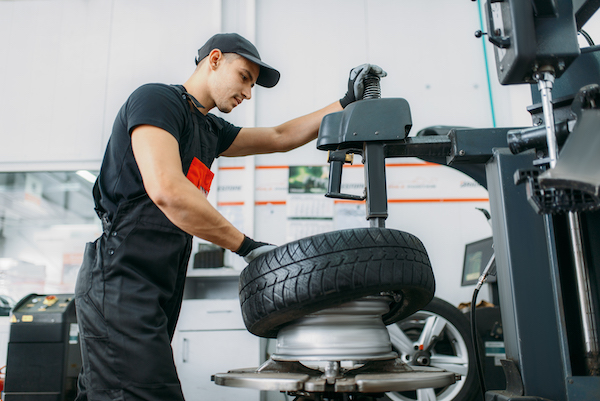Tire Service: Comprehending Tire Stress Tracking Systems
Comprehending Tire Stress Monitoring Solutions (TPMS) is a crucial element of keeping optimal automobile efficiency and safety on the road. With innovations in automotive innovation, TPMS has actually become a conventional function in contemporary automobiles, giving real-time details on tire stress degrees.

Significance of TPMS
The value of Tire Pressure Monitoring Solutions (TPMS) depends on their capacity to enhance car security and efficiency via real-time surveillance of tire stress levels. Maintaining the appropriate tire pressure is crucial for making sure optimum handling, stopping, and total safety and security of a lorry. TPMS provides drivers with immediate feedback on any underinflated or overinflated tires, enabling timely adjustments to be made.
Components of TPMS
Consisting of different important elements, a Tire Stress Monitoring System (TPMS) functions as an advanced safety attribute in modern lorries. The primary parts of a TPMS include sensing units, a control module, and a caution indicator. Sensing units are usually situated in the tire valve stem or connected to the wheel assembly, where they gauge tire pressure and transfer information to the control module. If it spots substantially low pressure in any of the tires, the control component procedures this information and activates a caution. The warning sign, often a sign on the control panel, informs the motorist to check the afflicted tire or tires. Some progressed TPMS models additionally display the actual tire stress analyses for each and every tire, offering vehicle drivers with real-time information to guarantee ideal tire efficiency and safety. By keeping an eye on tire stress continually, TPMS helps avoid mishaps, minimizes tire wear, and boosts gas efficiency, making it an important element for lorry safety and security and performance.
Kinds Of TPMS

On the other hand, indirect TPMS depends on the vehicle's wheel rate sensors to keep an eye on tire pressure. This system finds underinflation by comparing the rotational rates of the wheels. Indirect TPMS is much less expensive than straight TPMS, as it utilizes existing sensing units within the lorry.
While direct TPMS supplies much more exact readings, indirect TPMS is easier in layout and usually calls for less maintenance. Both systems have their restrictions and benefits, and the choice between them usually depends upon aspects such as price, car make, and individual choice. Understanding the differences in between these 2 kinds of TPMS can help automobile proprietors make educated decisions concerning tire upkeep and safety and security.
TPMS Maintenance Tips
Conduct regular checks on the tire pressure degrees and compare them navigate to this site with the TPMS readings to guarantee they are consistent. Throughout tire rotation or substitute, make certain that the TPMS elements are taken care of very carefully to prevent any type of potential damage. If the TPMS advising light illuminates on the dashboard, resolve the issue without delay by checking the tire pressures and the total system for any faults.
Advantages of Appropriate Tire Stress
Maintaining appropriate tire stress, as emphasized in TPMS Upkeep Tips, is essential for gaining the numerous benefits related to optimum tire pressure levels. Among the key benefits of maintaining the right tire stress is boosted fuel effectiveness. When find this tires are appropriately blown up, there is less rolling resistance, resulting in much better gas economy. Additionally, appropriate tire stress makes sure also tire wear, expanding the lifespan of the tires and promoting safer driving conditions. With the best tire pressure, automobiles additionally have far better handling and grip, specifically in adverse weather conditions. This can enhance general driving performance and security for the motorist and travelers. In addition, preserving ideal tire pressure can contribute to a smoother and much more comfortable trip by minimizing vibrations and noise caused by underinflated tires. Finally, the advantages of correct tire stress go beyond just tire long life; they incorporate enhanced fuel Bonuses efficiency, enhanced safety and security, much better car performance, and total driving convenience.
Conclusion
To conclude, comprehending tire stress tracking systems (TPMS) is crucial for preserving optimum tire pressure and ensuring car safety and security. By acknowledging the importance of TPMS, recognizing with its components, understanding the various types offered, sticking to proper upkeep tips, and recognizing the advantages of maintaining appropriate tire stress, drivers can enhance their driving experience and extend the life-span of their tires. Proper tire stress is crucial to reliable and secure vehicle operation.

Comments on “Discover the most effective Tires Morris IL: Considerable Selection Available”